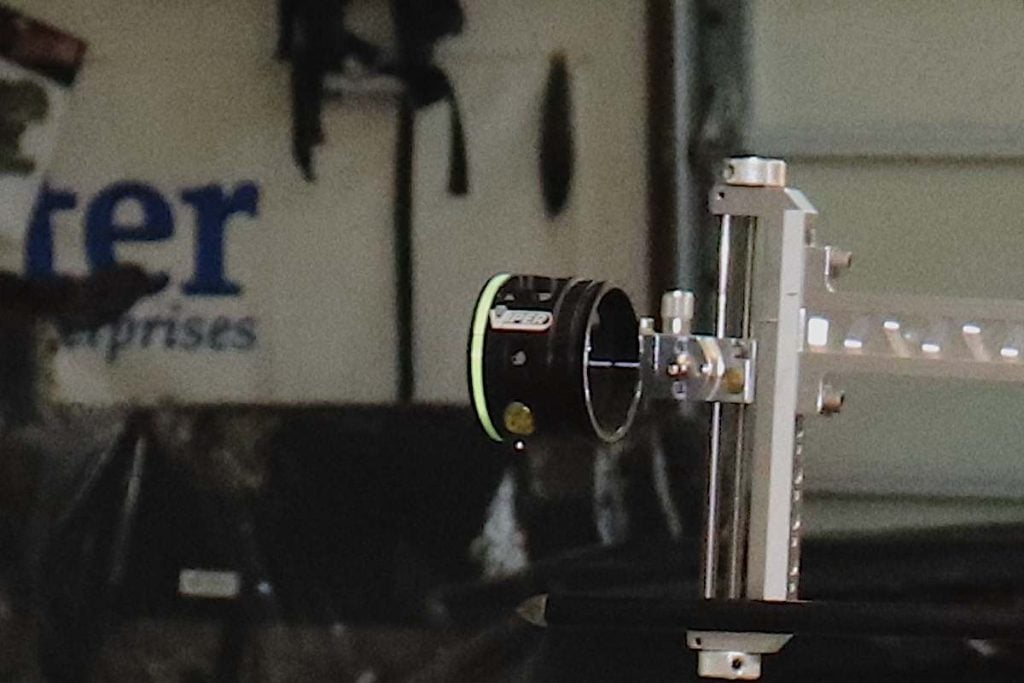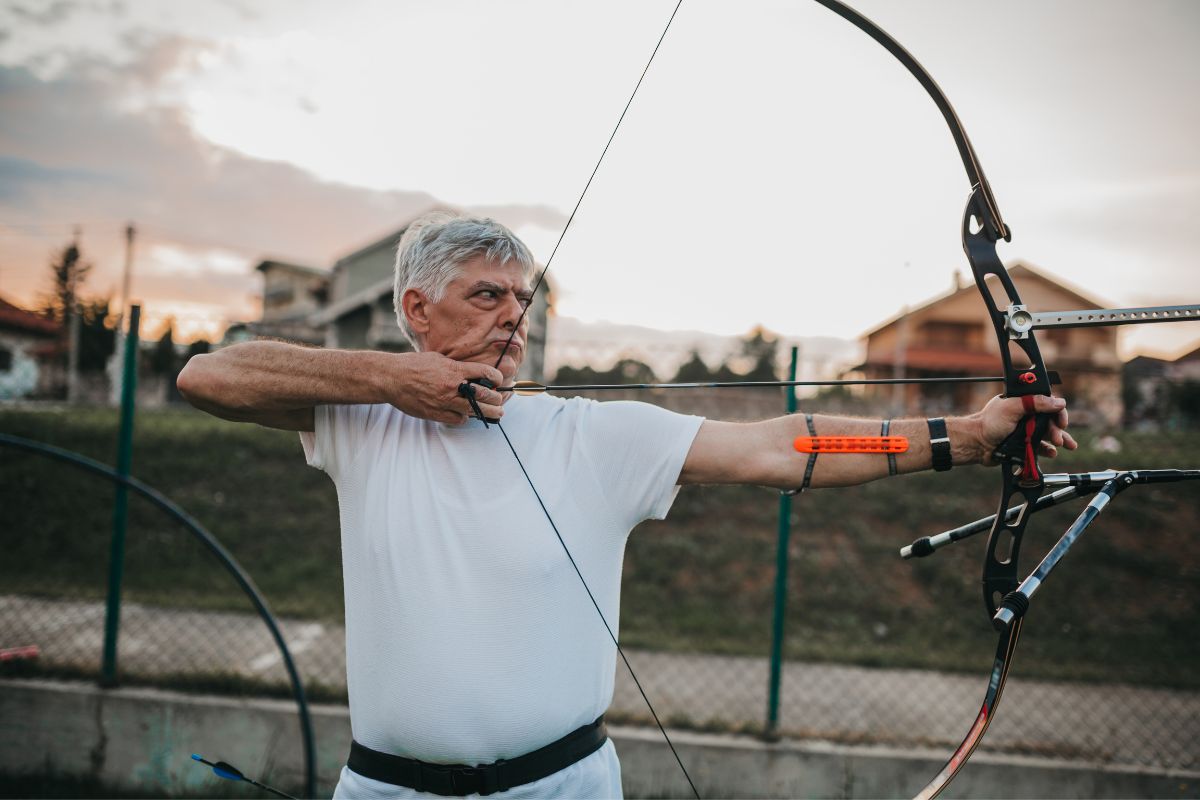To many, the idea of shooting any weapon, let alone a bow, without a sight aid might seem somewhat foreign.
However, for the avid recurve archer, aiming this way is a way of life. This, of course, is not to say that shooting instinctively or by other means without any form of sight does not pose a significant challenge.
This is especially true for those just starting their traditional archery journey.
Just like riding a bike or reciting the lines of a play, learning to aim a recurve bow accurately requires substantial practice, determination, and dedication.
Even with mastering the basics, one is likely to find such a learning curve far easier to surmount than previously expected.
Contents (Jump to Topic)
ToggleRead on to learn the basics of aiming a recurve bow and several helpful tips and tricks.
The Art Of Aiming
The term “aiming” describes pointing a drawn bow in a manner consistent with that which will place an arrow on target upon its release.
The exact method in which a recurve archer chooses to aim differs by individual, though sightless aiming tends to be the most popular across much of the industry.
However, some archers also choose to outfit their traditional bows with specialized sights of one particular type.
There is nothing wrong with aiming this way, as it gives many archers the added confidence to make their shots count.
Sightless Aiming
As mentioned, the bulk of today’s traditional archers forgoes the use of a sight aid.
This means that a bow is not outfitted with any device specifically intended to aid one’s ability to aim or align an arrow with its intended point of impact.
This poses many challenges not faced as starkly by those using a dedicated sight.
There are several different methods commonly employed by those forgoing the use of a sight when aiming.
These methods include face walking, string walking, gap shooting, and instinctive shooting.
Face Walking
The act of face waking involves changing the position of your anchor point as it relates to the orientation of your face.
When aiming in this manner, one’s hand remains in the same spot along the bowstring, and the tip of an archer’s arrow stays pointed at the center of its intended target.
Adjustments are made to this floating anchor point to modify an arrow’s point of impact at various distances.
Some find an issue when attempting to aim in this manner, as it does not provide the same consistency in form as other methods of aiming.
Mainly due to its lack of a singular anchor point.
Many also need help gauging the amount of adjustment made to articulate their aim when drawing
Though accuracy can still be found with actual practice.
String Walking
String walking is yet another method of aiming employed by those forging the use of a traditional sight.
When aiming in this manner, an archer moves their draw hand up and down the bowstring to vary the orientation of one’s arrow in relation to an archer’s sight picture.
Nonetheless, an archer will still be pointing the tip of their arrow at their intended point of impact while maintaining the same anchor point under any scenario.
String walking, once mastered, is quite accurate, especially at close to moderate distances.
However, at longer distances, this accuracy tends to diminish slightly.
This method of aiming is perhaps the second most popular, second only to instinctive shooting.
read.. Alex barebow experience
Gap Shooting
Gap shooting involves varying the orientation of your arrow with a target along a vertical axis.
To aim effectively in this fashion, one must be extremely familiar with their bow and the arrow being fired.
An archer must also find a defined distance at which their aim is true when pointing their arrow directly at the center of the target itself.
This distance is referred to as “point-on.”
Once an archer has determined their bow’s point-on distance, one must aim lower along a vertical axis at closer distances or higher at further distances to ensure that their arrow flies true.
For those who are consistent in their form and extremely polished in their ability, gap shooting can be an excellent method of aiming to employ.
Instinctive Shooting
As its name would suggest, instinctive shooting revolves around the concept of aiming without deliberate thought regarding a specified reference point.
Instead, one concentrates intently upon their intended point of impact while drawing, anchoring, and releasing, all in one fluid motion.
With practice, one will begin to develop a sense of natural aim without conscious awareness of the act of aiming itself.
To ever reach a level of mastery when shooting instinctively, you must practice intently while remaining dedicated to the art itself.
Accuracy when shooting in this manner is not developed overnight, yet it is undeniable and not easily faltered once achieved.
Aiming With Sights
As mentioned above, there is also nothing wrong with using sight aids when learning to aim a recurve bow.
In fact, many successful recurve archers use sight aids of one type or another when shooting to an extremely high degree of accuracy.
For many, the use of sight aids provides a heightened level of confidence that, in itself, makes them far more accurate.
Sights provide a definitive point of reference when aiming, which allows an archer to meter their shot accordingly, based primarily upon distance.
While some sights feature an open halo-type aiming apparatus, most now include pins tipped with fiber-optic filaments.
There are several different types of sight aids commonly available for the recurve bow.
Some of the most popular of these sight-aids include
Pin Sights

Like compound archers, pin-style recurve sights feature defined pins corresponding to specific yardages.
The bulk of today’s pin sights now features fiber-optic tipped pins, providing enhanced low-light visibility.
When aiming, the pin set for the distance you intend to shoot is floated over the target before initiating your release.
Pin sights are highly accurate and ideal for use across a broad range of distances.
As long as you have a pin sighted in for a specific distance, you can accurately take almost any shot, all other variables aside.
Accuracy is also more easily obtained with a pin sight than with most other sight types.
Open Ring Sight
As its name would suggest, an open ring sight is little more than an open ring, void of any additional pins or reference points.
When sighted in accordingly, an open ring sight can be floated over an archer’s intended target, with the bullseye itself positioned within the central portion of the halo.
This allows aiming to take place in much the same manner as looking through a peep sight when aiming a compound bow.
One of the advantages of an open ring sight is that it provides an archer with an open field of view and a clear sight picture, completely void of clutter from numerous pins.
However, on the downside, many archers feel that an open ring sight tends to be more difficult to aim precisely than a standard pin-style sight.
Target/Competition Sights

Though far less commonly found on recurve bows than the two previously discussed sight varieties, this list would not be complete without at least touching upon the use of target/competition sights.
These sights combine the basic concept behind pin-type sights with a wealth of additional adjustability.
Target/competition sights often feature integrated levels and windage adjustments, allowing archers to fine-tune almost every perceivable measure.
Sights of this nature are unlikely to benefit those not already distinguished in traditional archery.
This stems from the fact that most archers lack the impeccable form required to realize such gains offered by the precision design of target/competition sights.
These sights also tend to be extremely pricey and unsuited for hunting-related applications.
Aiming For Perfection
Whether shooting with or without the use of sights, learning to aim accurately and shoot a recurve bow comes down to practice and persistence.
Simply put, the more you shoot, the more accurate you will become.
Accuracy is not achieved overnight. Quite the contrary, excellence in the discipline of traditional archery is earned, shot-by-shot.
With a bit of consideration and ample trial and error, you will undoubtedly find the best aiming method under the exact circumstances you are faced with.
With this in mind, dedicate yourself to the adventure ahead, shoot for excellence, and aim for perfection.
In short order, you will surely recognize the reward for your steadfast labor and efforts.






